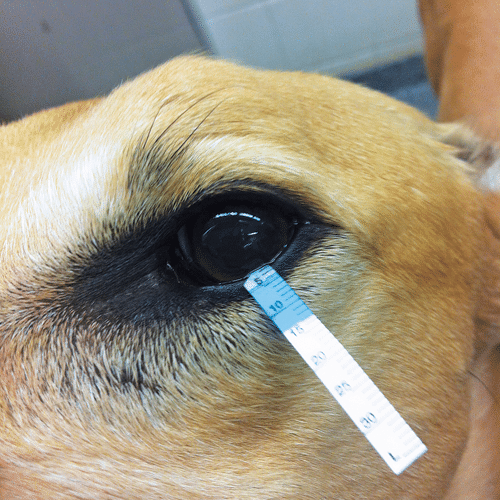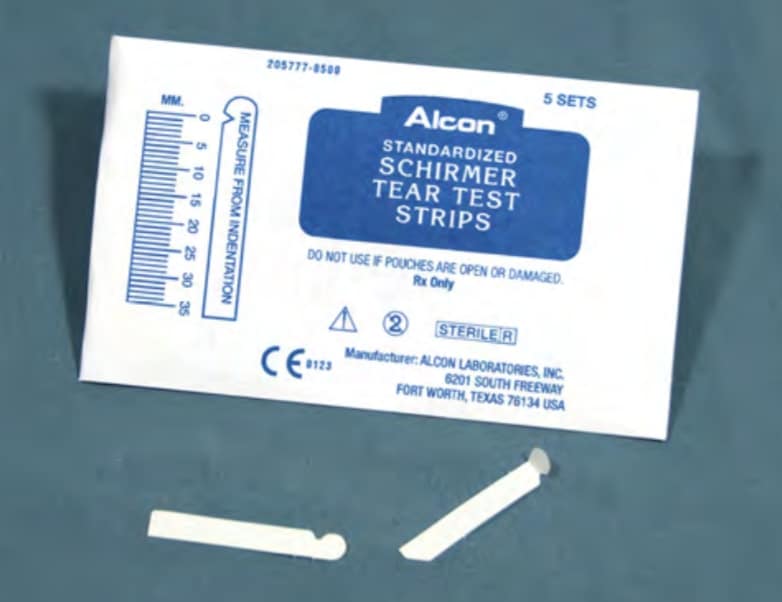The Schirmer Tear Test is commonly employed in human and veterinary practice .

In the veterinary practice to evaluate tear production in animals, particularly dogs and cats.
Importance of Schirmer Tear Test
This diagnostic tool helps assess the health of the lacrimal (tear) glands and diagnose conditions like keratoconjunctivitis sicca, commonly known as dry eye.
During the test, a small strip of paper is placed in the lower conjunctival sac of the eye.
How strip works
The strip absorbs tears over a specific time period, typically one minute.

The length of wetting is then measured, indicating the quantity of tears produced.
Low Schirmer test values may suggest inadequate tear production, leading to ocular discomfort, corneal ulcers, or other eye issues in animals .
How to perform Schirmer Tear Test
This diagnostic method aids veterinarians in determining appropriate treatments, such as artificial tears or medications, to manage and improve tear production in affected pets.
precautions
Because of the risk of false readings, the following should be avoided prior to conducting a Schirmer Tear Test:
- excessive manipula-tion of the eyelids, topical anesthesia, and topical or systemic drugs (e.g., tranquilizers and atropine).
- The round end of the test paper is bent while still in the envelope and positioned to avoid contamina-tion.
- The bent end should be positioned in the lacrimal lake at the junction of the lateral and middle thirds of the lower eyelid.
- Most animals will close the eye during the test but this does not affect results.
- The Schirmer Tear Test should be left in position for one minute as results are not linear and cannot be extrapolated from shorter test times.
Schirmer tear test values are as follows for the following species:
Dogs: 21.9 +/- 4.0 mm wetting per minute
Rabbits: 5.3 +/- 2.9 mm wetting per minute
Cats: 20.2 +/- 4.5 mm wetting per minute.
Frequency
Regular monitoring using the Schirmer Tear Test is crucial for maintaining ocular health in veterinary patients.
Step-by-step learning
we will learn in this section how to perform it step-by-step.
sources :
Small Animal Clinical Techniques , 2nd edition.
